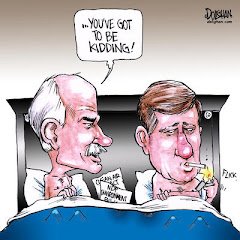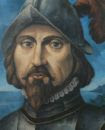Civil Rights Movement
Pre- Instructional Phase
Teaching Standards: Social Studies Standards 1 & 4- Students will use a variety of intellectual skills to demonstrate their understanding of : major ideas, themes, developments, and turning points in the history of the United States and how the United States and other societies develop economic systems and associated institutions to allocate scarce resources.
ELA Standards 1, 2, 3 & 4- Students will read, write, listen, and speak for: information and understanding, literary response and expression, critical analysis and evaluation, and social interaction.
Lesson Objectives: (LWDAT= Learning Will Demonstate Ability To)
Cognitive- Given the Web Quest information, LWDAT use technology to demonstrate their understanding of The Civil Rights Movement and Martin Luther King, JR.
Content:
The time era is the Civil Rights Movement and the contributions of different African Americans. In Birmingham, Al. Martin Luther is trying to organize the people to fight for their Civil Rights. He made a speech in a church, trying to get the support of the adults to protest the abuse that they faced each day. Due to fear, none of the adults were willing to sacrifice their jobs, prison time, and possibly their lives. However, the children decided to participate and each day that they did, they were thrown into prison. Soon, there were so many children in jail that the jail was full and the school gym had to be used.
Instructional Aids: computer and internet,
Student Modifications: reading guides, partner work, whole- group discussion
II. Interactive Phase
Focusing Event:
“Imagine that you are a middle school student who lives in Birmingham, Alabama and are of African American descent. After hearing a Martin Luther King Jr. speech in your church about how people need to stand up for their rights. Then, he asks who is willing to meet at the church and march on the street in protest of the wrongs. You and many other kids you know stand up, but the adults remain seated. The next day you bring your toothbrush to school with you because at noon you were going to go to the church and march in the protest”.
Implementation:
“Today and for the rest of the week we are going to work on Web Quests. There will be questions in a packet that need to be answered before the end of the quest. We will be working in the computer lab for the rest of the week. I will give you guys the rest of the instructions when we are in the computer lab”.
“Please begin your work and do not be shy to talk out the answers with your partner. If you and your partner disagree on an answer, then you can ask another group that is sitting next to you. Then, if after some discussion, the four of you can not agree on an answer, then you may raise your hands and I will try to help you. Please do not be shy about asking your partner or the group next to you a question because these Web Quests and the work that goes with the Quests are meant to be collaborative. In this particular assignment, talking with your peers is encouraged, but lets all remember that we are in school and must use our inside voices, so the students in classes surrounding us will not be disturbed by our class.
Closure:
"Tell the person sitting next to you something new that you learned about Martin Luther King Jr. and how the children help."
Extending Activity:
“For homework, I want you to write a journal, one page in length, describing your experience for the first day of the Quest, what you have learned, what you hope to learn, and any goals for work your group wants to complete next time.
Names: Date:
Group #: Civil Rights Web Quest
Situation: Imagine that you are a middle school student who lives in Birmingham, Alabama and are of African American descent. After hearing a Martin Luther King Jr. speech in your church about how people need to stand up for their rights. Then, he asks who is willing to meet at the church and march on the street in protest of the wrongs. You and many other kids you know stand up, but the adults remain seated. The next day you bring your toothbrush to school with you because at noon you were going to go to the church and march in the protest.
What are Jim Crow Laws? About what year did Jim Crow laws begin?
2. Name some examples of Jim Crow laws?
3. What court case established the principle of separate, but equal and in what year?
4. Why is this case significant?
Who was Martin Luther King Jr.?
Describe some of his goals?
Where did a protest, similar to the situation I gave you in the beginning of class take place and when?
What happened to the children that participated?
How do you think they felt?
Write a narrative that could have been written by a child that marched in the protest of the Civil Rights Movement. This must be at least one to two pages in length (remember that one page is the front and the back of a piece of paper) and be a collaboration of what you learned through your Web Quest.






No comments:
Post a Comment